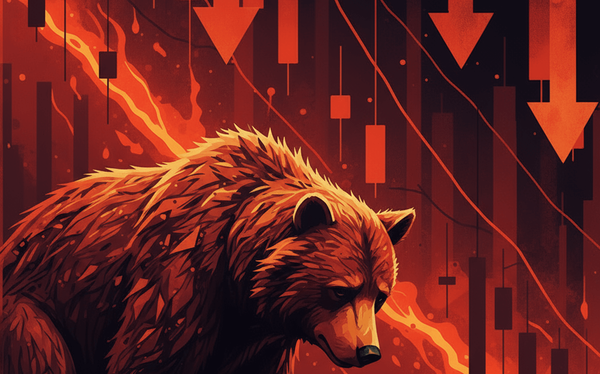What is Commodity Trading? Explained in most simplest way
Learn what commodity trading is, how it works in India, the types of commodities you can trade, key participants, strategies, and steps to get started.

When people talk about trading, stocks often come to mind. However, there is another important area of financial markets that plays a significant role in India – commodity trading.
Commodities are basic goods such as gold, silver, crude oil, wheat, cotton, and natural gas that are used in everyday life. Commodity trading allows individuals to buy and sell these goods in a structured market, similar to trading shares on a stock exchange.
What is Commodity Trading?
Commodity trading involves buying and selling raw materials or primary products in a regulated exchange. Instead of physically owning the commodity, traders often deal in commodity derivatives such as futures and options. These contracts allow you to trade on the predicted price movement of commodities without actually storing or transporting the goods.
In India, Multi Commodity Exchange (MCX) and the National Commodity and Derivatives Exchange (NCDEX) are the commodity exchange market in India.
How does it work?
You can do commodity trading in India via futures and options contracts. To those unaware, a futures contract is a derivative agreement through which you can buy or sell a commodity at a predetermined price on a specific future date. For example, if you believe that crude oil prices will rise, you can buy a futures contract today at a fixed price and sell it at a later date at a better price to make a profit. On the other hand, an options contract gives you the right, but not the obligation, to buy or sell a commodity at a set price before the contract expires.
Commodity exchanges like MCX and NCDEX standardize these contracts in terms of quantity, quality, and delivery date. This standardization ensures that trading is fair and transparent. While most contracts are settled in cash, some involve physical delivery of the commodity.
What Commodities can you trade in India?
Now that you know what is commodity trading, here is the list of commodities you can trade in India:
Metals
In India, metals are the most popular tradable commodities. It covers precious metals like gold and silver, and base metals such as copper, aluminium, lead, zinc, and nickel. Their price performance depends on global supply chains, mining output, and consumption patterns in construction, manufacturing, and electronics sectors.
Soft Commodities
Soft commodities are plantation-based products, including coffee, cocoa, rubber, tea, and jute. These commodities are weather-sensitive and are impacted by global demand patterns. Trading in soft commodities allows you to benefit from international pricing while supporting the agricultural export market.
Agricultural
India, being an agrarian economy, offers trading in agricultural commodities like wheat, rice, pulses, sugar, cotton, soybeans, maize, guar gum, and spices. Monsoons, seasonal cycles, government policies, and global demand influence these commodities.
Energy
In the energy segment, you can trade crude oil and natural gas. Many investors prefer crude oil, as India is one of the largest importers, and its price fluctuations directly impact the economy. In recent years, natural gas trading has expanded due to its growing use in both industries and households.
Key Participants in Commodity Markets
There are many participants in the commodity exchange market in India:
- Hedgers: Individuals or companies who want to reduce the risk of price volatility.
- Speculators: Traders who take on risk to profit from price changes.
- Arbitrageurs: They take advantage of price variations in different markets or contracts.
- Retail Traders: Individual traders in India who participate through brokers or online platforms.
How to start trading Commodities?
For beginners, starting commodity trading involves a few steps:
- Step 1: Open a commodity trading and demat account with a SEBI-registered broker.
- Step 2: Since commodity trading requires paying a margin, which is a percentage of the total contract value, check the margin limit on the platform.
- Step 3: Learn how F&O contracts work, including expiry dates and lot sizes, that's it!
Note: If you are a beginner, always start with small trades to gain experience and then commit larger amounts.
Popular trading strategies
When trading commodities, you can consider the following five strategies:
Trend Following
Trend following involves studying price charts to identify upward or downward market movements and trading in the same direction. You can use moving averages to verify the trend. The goal is to ride the momentum until signs of reversal appear.
Range Trading
Range trading works best when commodity prices move between fixed support and resistance levels. You can buy at support zones and sell near resistance areas. Always use technical indicators like Bollinger Bands or Oscillators such as RSI to confirm entry and exit points.
Spread Trading
In spread trading, you buy one commodity contract and sell another, but at the same time and within the same sector. For example, buying gold futures while selling silver futures helps balance risks because both metals usually move together.
Profit comes from changes in the price difference between the two contracts rather than overall price direction. This approach suits beginners who prefer less risk than outright long or short positions.
Seasonal Patterns
Many commodities show seasonal price behaviour due to demand and supply cycles. For example, agricultural products such as wheat or corn often rise before harvest shortages and fall after supply increases.
Energy commodities like natural gas may rise in winter due to heating demand. You can study these recurring seasonal patterns and align trades accordingly.
Arbitrage Opportunity
Arbitrage trading exploits price differences of the identical commodity across different markets or contracts. For example, if you notice a variation in the gold price in the spot market and futures contracts, you can buy low and sell high simultaneously to benefit from the spread.
However, the challenge with this strategy is speed, as arbitrage windows close quickly due to automated trading systems.
Wrapping up
If you are looking to diversify your portfolio, commodity trading can be the best option. It diversifies your holdings and also allows you to hedge against inflation while benefiting from liquidity.
However, unlike other investment instruments, commodities carry risks arising from regulatory reforms, political turmoil, and weather uncertainties. Also, since commodity trading is based on leverage, a negative price fluctuation can magnify losses.




